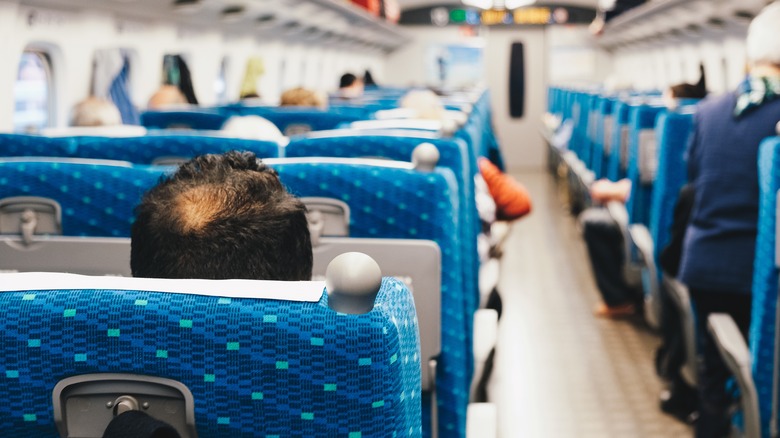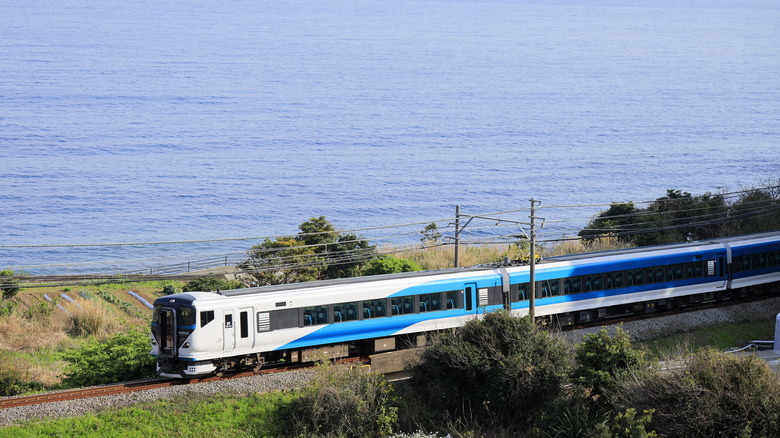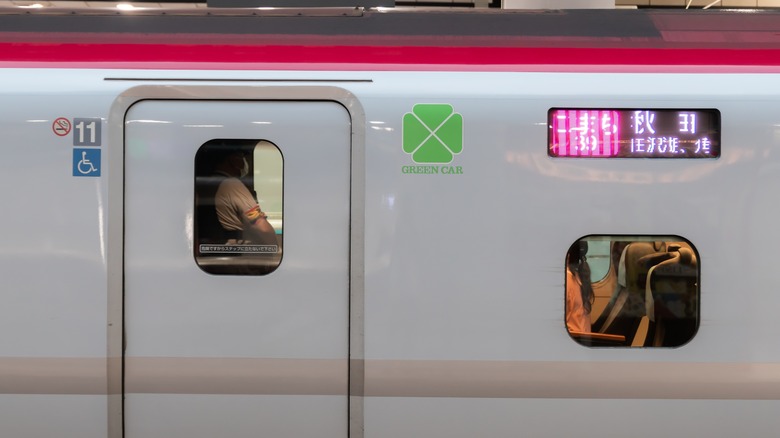The Color-Coded Seating System Tourists Need To Know When Taking A Train In Japan
Grabbing a JR Pass and zipping around on the high-speed trains is an essential travel hack you should know when visiting Japan. In just a couple of hours, you can hop from Tokyo to Kyoto or between several other destinations across the country. The trains in Japan are tourist-friendly and fairly easy to use, though there are a few things first-timers should learn, such as where to sit in the carriages.
Some trains have reserved seating, which guarantees you a spot to sit and rest your legs. With a reserved seat, you must select your exact journey and departure time in advance. On the other hand, unreserved seats offer more flexibility and are generally cheaper than reserved seat tickets.
Unreserved seats are ideal for spontaneous travelers and tourists on a budget, but there's one catch: Those seats can be snatched up by another passenger who booked reserved seating. To figure out which seats are vacant and which belong to another traveler, look on the ceiling for color-coded lights. If you see a red light, the seat is vacant and free to take. If it's yellow, another passenger has reserved the seat and will board the train at the next station. If the green light is illuminated, the seat is already occupied. Note that the colors may change during your journey, so it's best to keep an eye on your overhead lights if you purchase an unreserved seating ticket.
Which trains have the colored lights?
Don't expect to find color-coded seat lights on all trains in Japan. The feature is only available on some long-distance, Shinkansen-style trains using new carriage models. That means you won't find the lights on most inner-city trains, metros, or trains with women-only cars (which, FYI, never need to be reserved).
However, if you take a trip to another city or prefecture using a train operated by JR East — which covers the Kantō, Tōhoku, and Kōshin'etsu regions of the country — you might run into the red, yellow, and green seat lights. Specifically, you can expect to find the system on some of JR East's limited express trains. These include Azusa and Kaiji on the Chūō Line, Odoriko, Hitachi, and Tokiwa. Some trains on the Limited Express Shōnan route, running from Tokyo to Odawara, are also outfitted with the colored lights.
If your train requires a ticket to board, whether for a reserved or unreserved seat, consider that a hint that you may need to look out for the lights. Otherwise, hop on the train as normal and take any seat you'd like. If you wind up on a train with the color-coded system and forget what each light means, look for signage on the seatback explaining each hue.
Look out for green train cars in Japan too
On some trains in Japan, there's another color-coded seating system to be mindful of: the Green Car. Similar to the tri-colored lights, the Green Car is found on long-distance Shinkansen and limited express trains. Besides the green clover placed next to the door, these carriages look similar to any standard train carriage in Japan. However, the Green Car is actually an upgraded class, complete with plush seats, personal tables, onboard drink and food vendors, and more than enough room. Think of it as a first-class seat on a plane, compared to the typical economy cabin.
As you might've guessed, not everyone can plop themselves in a Green Car seat — at least not without paying. A spot in the Green Car requires an upgraded ticket, though the extra cost may be worth it if you're on a crowded route and have to compete for seating in the regular carriages. With a Green Car ticket, you're guaranteed a comfy seat. If you plan to travel with a JR Pass, you have the option to purchase a regular pass or a Green Car pass, which grants you access to the Green Car on any Shinkansen and limited express train.


